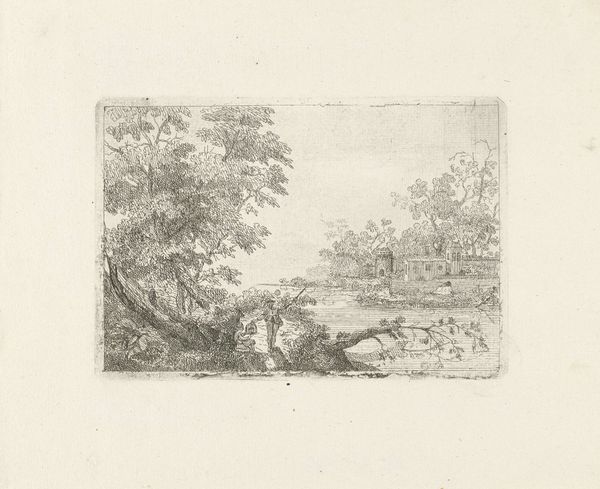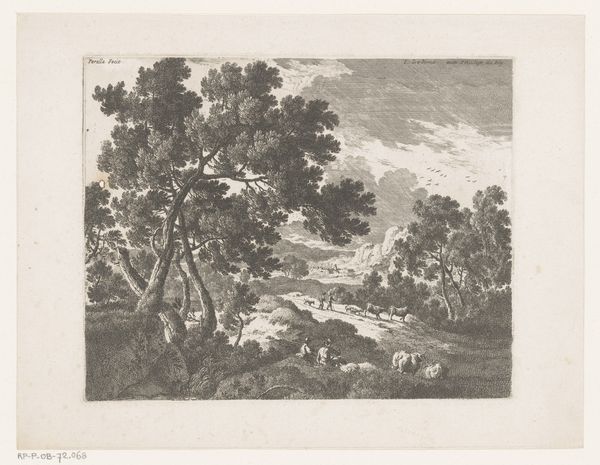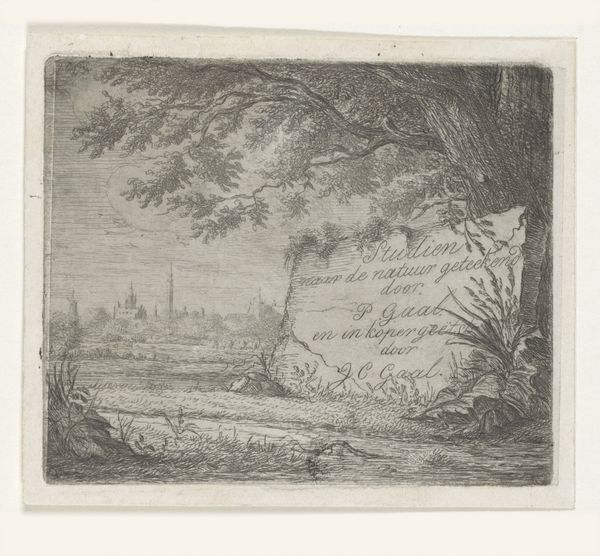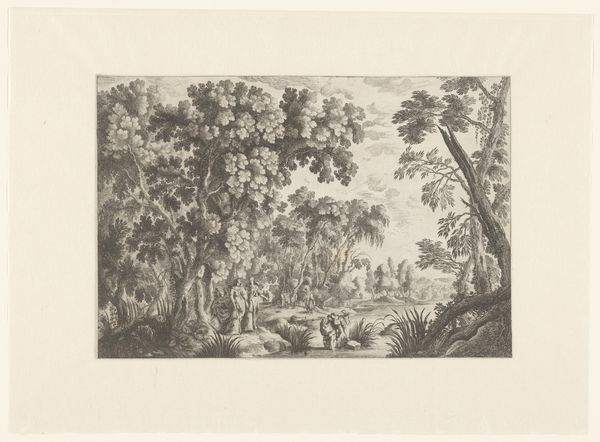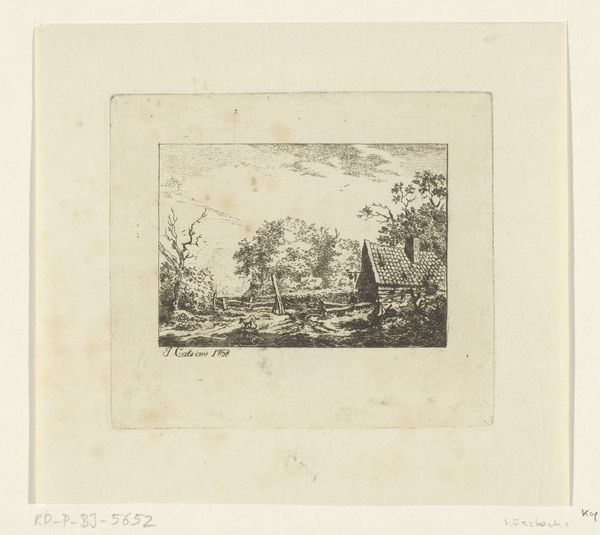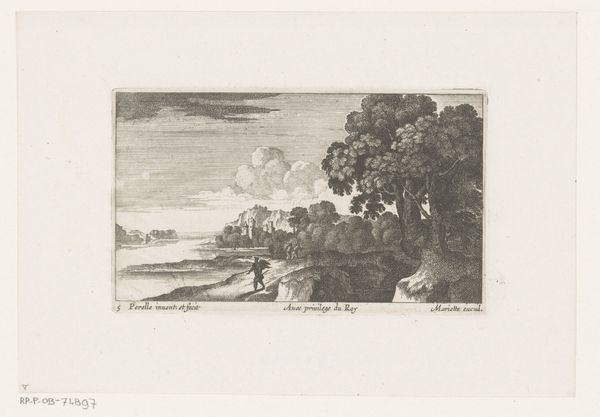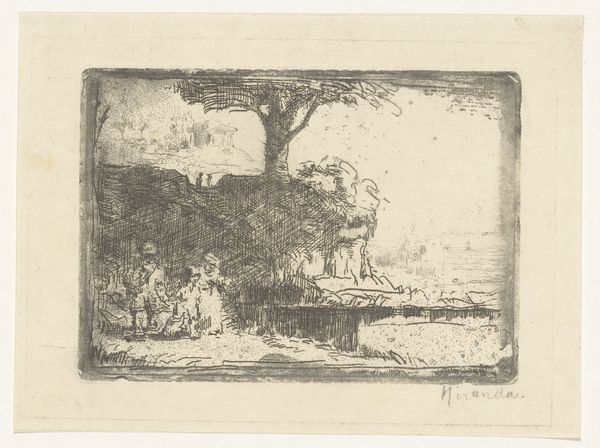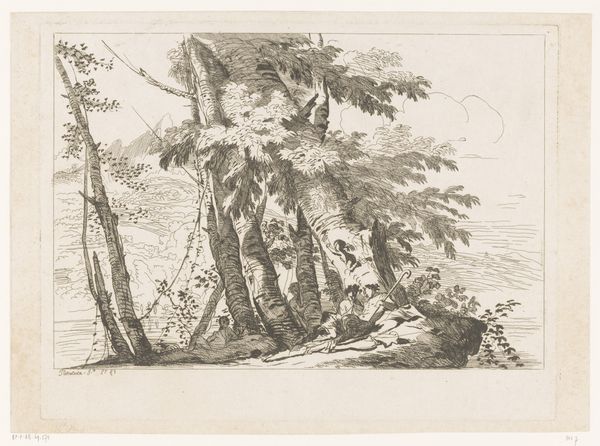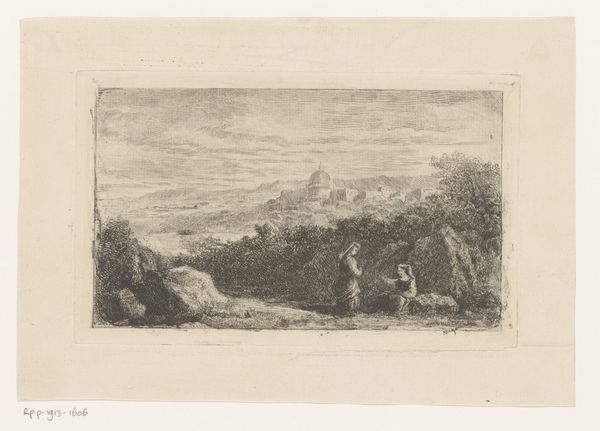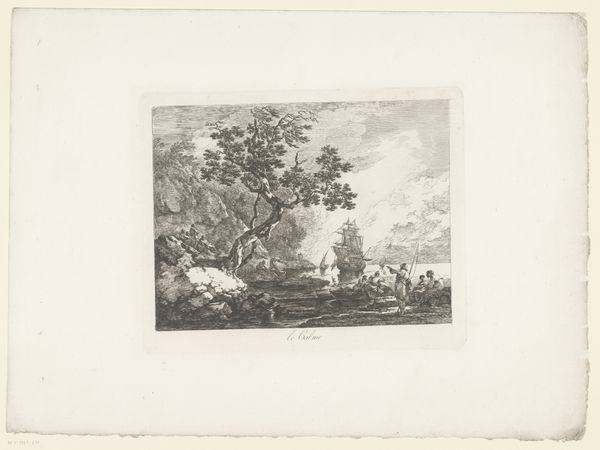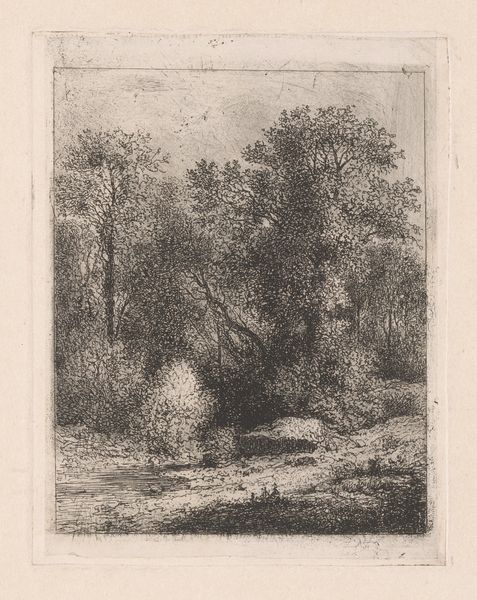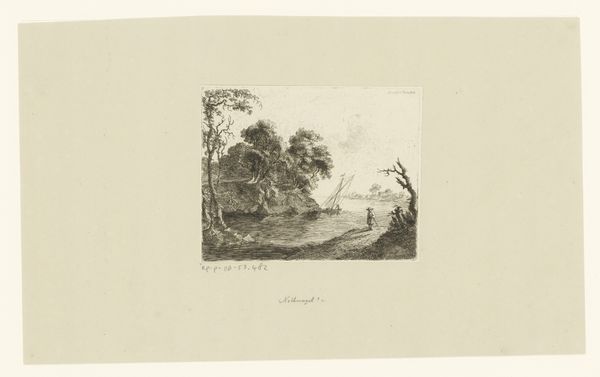
etching
#
etching
#
pencil sketch
#
old engraving style
#
landscape
#
etching
#
romanticism
Dimensions: height 82 mm, width 110 mm
Copyright: Rijks Museum: Open Domain
Curator: J. Cocquereau's "River Landscape with Ruins," an etching created sometime between 1800 and 1849. It presents a rather intriguing scene. Editor: Immediately, I’m struck by this intense feeling of melancholy, that pervades the image. It’s the subtle gray tones, but also the isolation of that ruined structure set against a turbulent yet serene river. Curator: Absolutely. Ruins were a common motif in Romantic art, acting as symbols of the past's grandeur but also humanity's impermanence, decline, and the power of nature. Etchings like these made such sentiments accessible to a broader public. Editor: Right. Think of the socio-political context then—massive shifts due to revolution and industrialization, which fostered anxieties and the search for solace in idealized landscapes and reflections on lost empires. Curator: The artist's choice to use etching allowed for a great deal of detail, which you see in the textures of the trees and foliage, creating a sort of visual poetry. Editor: And how it centers the viewer's gaze not only upon the ruin, but a barely noticeable figure off to the side. This individual seems overwhelmed, engulfed by history, memory, nature... Curator: Precisely. Landscapes weren’t simply about pretty scenery; they often served to illustrate ideas of national identity, the sublime, or a yearning for a simpler life. The ruin then serves as an element within that construct. Editor: In today's discourse, these idealized depictions could be perceived critically, as overlooking societal inequities of that era. Perhaps they romanticize an historical narrative while ignoring those marginalized during that same epoch. Curator: Indeed, it encourages consideration. We see the physical presence of structures imbued with cultural baggage. Editor: Thinking about what you mentioned and how the artwork resonates today, perhaps it prompts us to question what ruins we will leave behind for future generations? What will they interpret from our time? Curator: An important reflection to end with. This Cocquereau print really serves as an intimate window into not only the past, but into the possible futures that pasts engender.
Comments
No comments
Be the first to comment and join the conversation on the ultimate creative platform.

